How to Use Egg Shells for Plants
- February 9, 2024
- 0 comment
Discover how to enrich your garden with eggshells! Learn simple, effective ways to use eggshells for healthier plants and soil. Boost growth naturally. In the quest for a lush, vibrant garden, the secret might just lie in your kitchen’s waste bin. Eggshells, often overlooked, are a treasure trove of calcium and other essential nutrients that can significantly bolster the health and vitality of your plants.
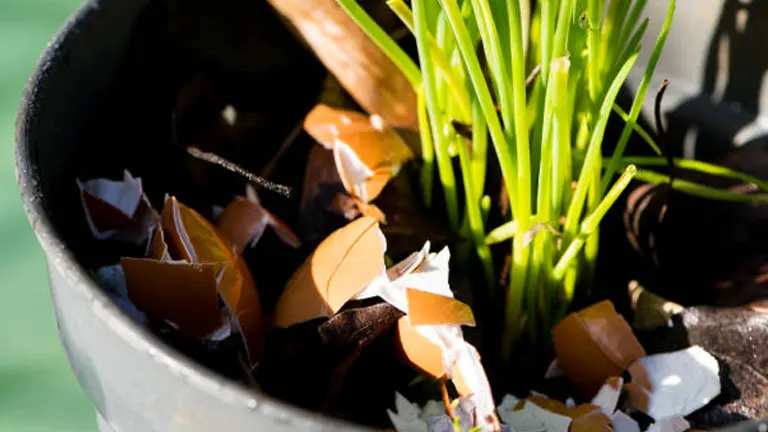
This guide unveils the simple yet effective techniques to transform your everyday eggshells into a powerhouse supplement for your garden, promising to boost plant growth naturally and sustainably. Whether you’re a seasoned gardener or a green thumb in the making, learn how to harness the full potential of eggshells to enhance your garden’s bloom and soil quality.
Table of Contents
- Understanding the Value of Eggshells in Gardening
- How to Use Egg Shells for Plants: A Step-by-Step Guide
- Special Uses of Eggshells in Gardening
- Eggshell Quantity Recommendations
- Best Practices and Considerations
- Sustainability and Beyond
- Conclusion
- FAQs
Understanding the Value of Eggshells in Gardening
Nutritional Breakdown
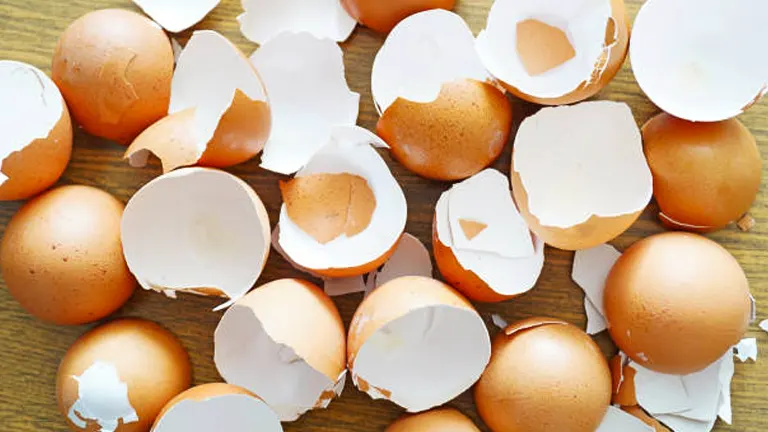
Eggshells are primarily composed of calcium carbonate, constituting about 95% of their makeup. This calcium is crucial for plants, aiding in the development of strong cellular walls which is essential for robust growth. Besides calcium, eggshells contain traces of other minerals such as magnesium, potassium, and phosphorus, all beneficial for plant health. These nutrients slowly release into the soil, providing a steady supply of essential minerals to plants.
Detailed Mineral Content and Analysis Table
Here’s an enhanced table that outlines the mineral composition of eggshells, the average content of each mineral in milligrams, and their specific roles in plant growth:
| Mineral | Approximate Percentage | Average Content (mg per eggshell) | Role in Plant Growth | Plant Benefit |
|---|---|---|---|---|
| Calcium (Ca) | 39.9% | 401 mg | Cell wall structure, enzyme activation, and stabilizing organic acids | Prevents blossom end rot, promotes healthy cell walls |
| Magnesium (Mg) | 0.3% | 3 mg | Chlorophyll production, enzyme activation, seed formation | Enhances photosynthesis, improves nutrient uptake |
| Phosphorus (P) | 0.04% | 0.4 mg | Energy transfer, photosynthesis, nutrient movement | Supports flowering and root development |
| Potassium (K) | 0.03% | 0.3 mg | Protein synthesis, stomata function, enzyme activation | Improves disease resistance, water regulation |
| Sodium (Na) | Trace amounts | <0.1 mg | In some plants aids in metabolism and synthesis | Can improve taste in some vegetables |
| Sulfur (S) | 0.01% | 0.1 mg | Protein formation, forms essential amino acids | Aids in chlorophyll production and disease resistance |
| Silicon (Si) | Trace amounts | <0.1 mg | Cell wall strength, disease resistance, drought tolerance | Mitigates metal toxicity, strengthens cell walls |
Each eggshell’s mineral content may vary based on the diet of the hen, the eggshell’s thickness, and environmental factors during decomposition. However, this table provides an average estimation that can help gardeners understand the potential contributions of eggshells to their soil’s fertility.
Release Rate and Bioavailability
The release rate of these nutrients into the soil is gradual, which provides a slow but steady source of minerals to plants. The solubility of calcium carbonate increases in acidic environments, making eggshells particularly beneficial in gardens with lower pH soils. By adding crushed eggshells to the soil, gardeners can ensure that their plants receive a consistent supply of calcium and other minerals, which can improve overall plant health and yield.
Environmental Impact
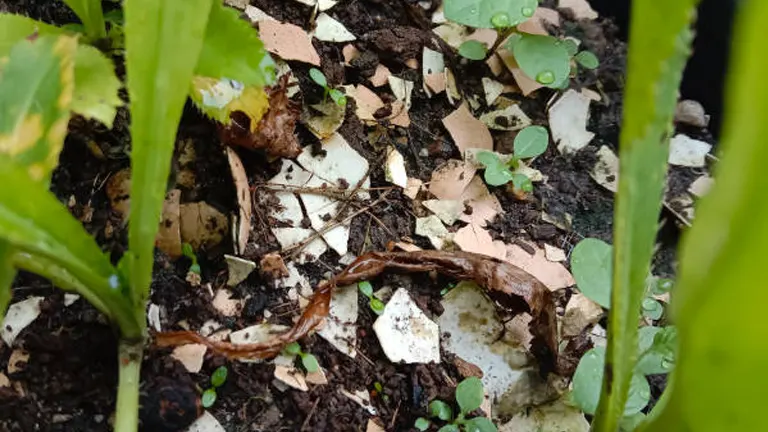
Using eggshells in the garden aligns with sustainable and organic gardening practices. By repurposing what would be kitchen waste, gardeners can decrease their environmental footprint. The addition of eggshells to the garden not only recycles nutrients back into the earth but also reduces the need for chemical fertilizers, promoting a more organic approach to plant care.
How to Use Egg Shells for Plants: A Step-by-Step Guide
Step 1: Collection and Cleaning
- Collect Eggshells: Start by saving your eggshells from cooking. It’s best to accumulate a good number before you begin the preparation process.
- Clean Thoroughly: Rinse the eggshells under running water to remove any egg white or yolk remnants. This is important to prevent attracting pests and to reduce the risk of salmonella.
Step 2: Drying
- Air Dry: Lay the cleaned eggshells on a paper towel or a clean cloth in a well-ventilated area. Allow them to dry completely, which can take a day or two.
- Oven Dry (Optional): For a quicker method, you can place the eggshells on a baking sheet and put them in the oven at a low temperature (around 200°F or 90°C) for about 10-15 minutes.
Step 3: Crushing
- Crush by Hand: Once dry, you can crush the eggshells by hand, which is the simplest method, but may not provide a very fine texture.
- Use a Mortar and Pestle: For a more consistent and finer result, use a mortar and pestle to grind the eggshells into smaller pieces.
- Rolling Pin Method: Another effective way is to place the eggshells in a plastic bag and gently roll over them with a rolling pin.
Step 4: Powdering (For Specific Uses)
- Blender or Food Processor: If you require a fine powder, for example for making eggshell tea or adding directly to planting holes, use a blender or food processor to grind the eggshells into a fine powder.
- Sieve for Consistency: After blending, you may sieve the powder to ensure uniformity, especially if you need a very fine grade for certain applications.
Step 5: Storage
- Airtight Container: Store the crushed or powdered eggshells in an airtight container to keep them dry and to prevent them from attracting pests.
- Label and Date: It’s helpful to label the container with the date so you can keep track of freshness, although eggshells can be stored for a long time if kept dry.
Step 6: Application to Plants
- Soil Amendment: Mix the crushed eggshells into the soil around your plants or into the planting holes when sowing seeds or transplanting seedlings.
- Seed Starting: Fill half-eggshells with soil, sow seeds inside, and once the seedlings are ready, plant them directly into the garden, shell included.
- Eggshell Tea: Soak 20-30 crushed eggshells in a gallon of water for a few days and use the strained water as a calcium-rich fertilizer for your plants.
- Compost Addition: Add eggshells to your compost pile to enhance the mineral content of your compost.
Step 7: Pest Control
- Create a Barrier: Spread crushed eggshells around the base of your plants to deter slugs, snails, and other soft-bodied pests.
- Regular Maintenance: Replenish the eggshell barrier after heavy rain or watering, as it may get scattered or buried.
Step 8: Monitoring and Adjusting
- Observe Plant Health: After adding eggshells to your garden, observe your plants for signs of improved health, such as stronger stems and more vibrant foliage.
- Soil pH Testing: If you’re using eggshells extensively, periodically test your soil pH to ensure it remains balanced, as eggshells can increase soil alkalinity over time.
Step 9: Record Keeping
- Take Notes: Keep a gardening journal to record how your plants respond to the eggshells. Note any changes in growth, pest activity, or overall plant health.
Special Uses of Eggshells in Gardening
Eggshell Tea for Plants
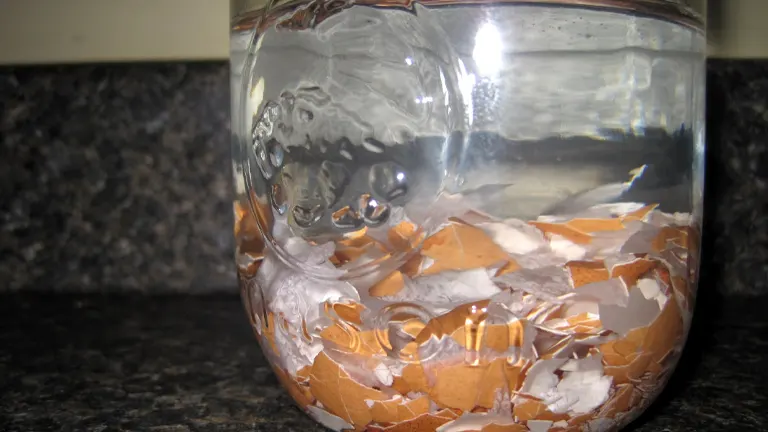
Eggshell tea is a simple, effective liquid fertilizer that can give your plants a calcium boost. To make it, rinse and boil a dozen crushed eggshells in a gallon of water. Let it steep overnight, strain, and use the liquid to water plants. This tea is particularly beneficial for plants showing signs of calcium deficiency, such as blossom end rot in tomatoes and peppers.
Decorative Mulch
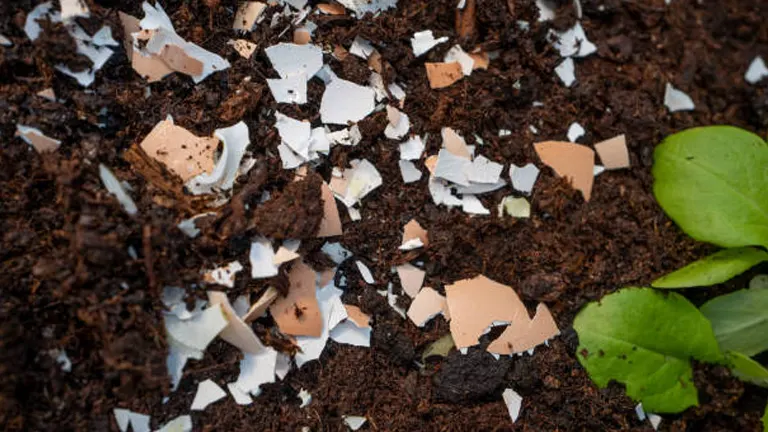
Beyond their nutritional and pest deterrent properties, crushed eggshells can also be used as a decorative mulch around plants. Their white color contrasts beautifully with the green foliage, adding aesthetic appeal to garden beds and containers. This layer of eggshells will slowly release calcium into the soil while helping to retain moisture and deter weeds.
Plant Disease Prevention
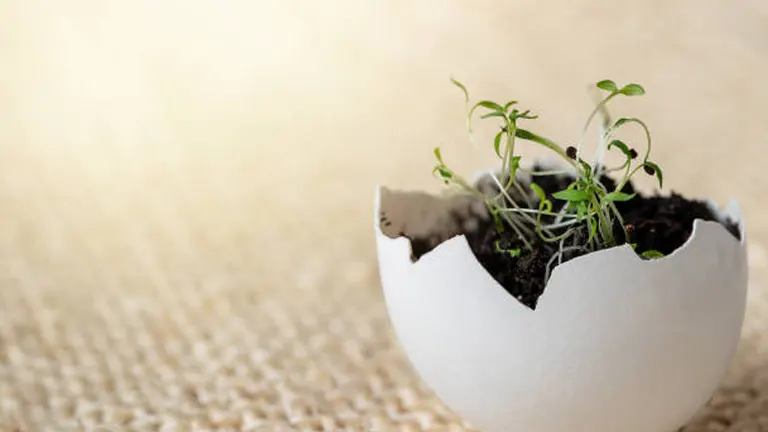
The calcium in eggshells is crucial for preventing blossom end rot, a common disorder affecting tomatoes, peppers, and eggplants. This condition is caused by a calcium imbalance within the plant, leading to the rotting of the fruit’s end. By adding eggshells to the soil, you ensure your plants have access to a steady supply of calcium, mitigating the risk of this disease.
Eggshell Quantity Recommendations
Incorporating eggshells into your garden can be a game-changer for plant health, but it’s important to use the right amount to avoid imbalances. Below are recommendations for different garden areas, along with pro tips to ensure optimal use.
For Small Garden Beds (4 by 6 feet)
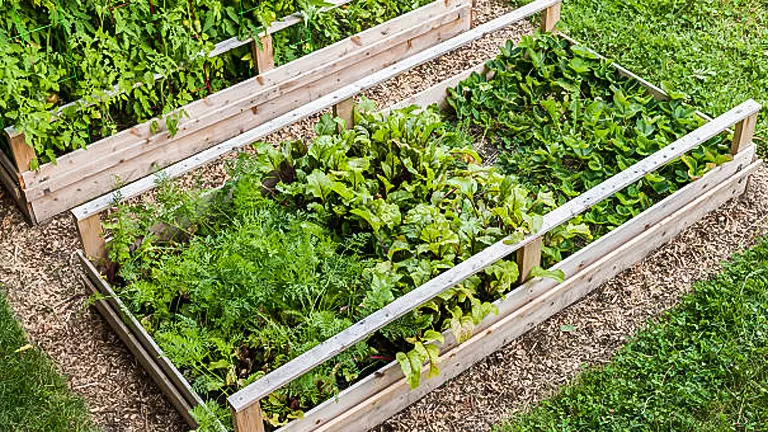
- Recommended Quantity: Start with approximately 12-24 eggshells. This amount should cover a small bed effectively, providing a decent calcium supply.
- Additional Tips:
- Distribute Evenly: Crush the eggshells into fine particles and spread them evenly across the garden bed to ensure uniform nutrient distribution.
- Pro Tip: For targeted application, place crushed eggshells directly into the planting holes or around the base of plants that are more susceptible to calcium deficiencies.
For Medium Garden Beds (8 by 10 feet)
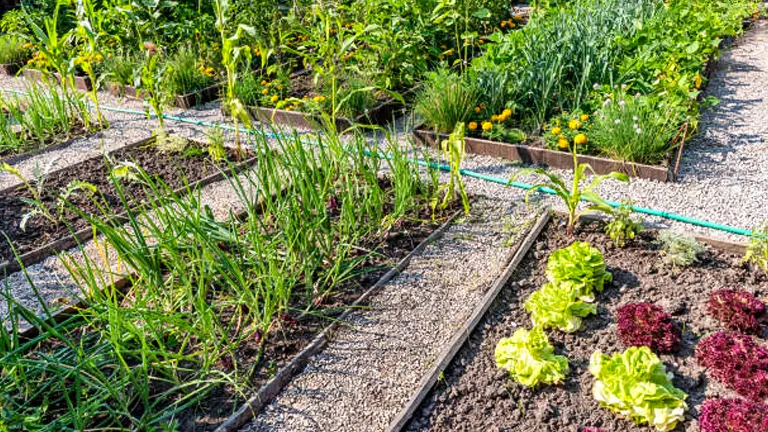
- Recommended Quantity: For a garden of this size, you would likely need about 50-60 eggshells to ensure that the calcium benefits reach all plants.
- Additional Tips:
- Layering: When preparing the bed, mix the eggshells into the top layer of the soil, about one to two inches deep.
- Pro Tip: If you’re preparing the bed for the next planting season, consider tilling the crushed eggshells into the soil at the end of the current season to allow them to decompose over time.
For Large Garden Areas (Over 100 square feet)

- Recommended Quantity: Use roughly 150-200 eggshells. Given the larger area, this will provide a widespread calcium boost.
- Additional Tips:
- Sectional Application: Divide your garden into sections and apply the eggshells section by section to maintain control over where you’ve supplemented.
- Pro Tip: For very large areas, you may want to consider making eggshell tea in bulk, which can then be poured over the soil as a liquid fertilizer.
For Container Plants

- Recommended Quantity: A single crushed eggshell per pot is typically sufficient.
- Additional Tips:
- Mix with Potting Soil: For new plantings, mix the crushed eggshell with the potting soil before placing your plant in the container.
- Pro Tip: For established plants, sprinkle the crushed eggshell on the topsoil, or work it gently into the first couple of inches of the soil surface without disturbing the roots.
For Raised Beds (Depending on Size)
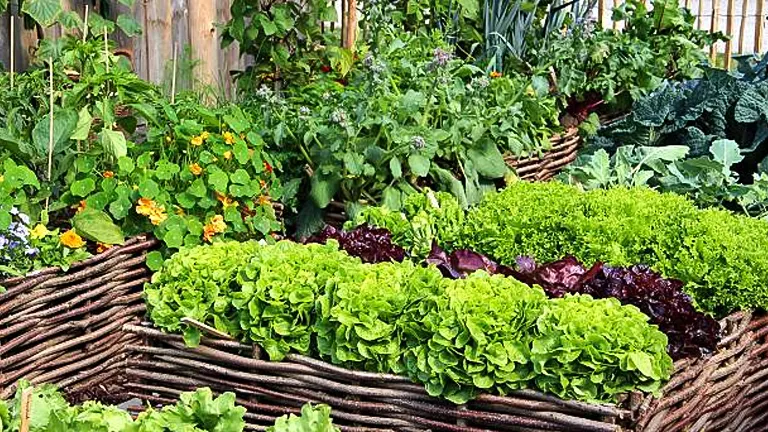
- Recommended Quantity: Scale the number of eggshells based on the size of your raised bed. Use the small garden bed recommendation as a baseline and adjust proportionally.
- Additional Tips:
- Consistent Application: Apply the eggshells consistently across the raised bed to prevent pockets of nutrient-rich soil that could lead to uneven plant growth.
- Pro Tip: Raised beds tend to dry out faster than ground soil, so consider using powdered eggshells, which can help retain moisture in the soil.
Pro Tips Across All Garden Types
- Soil Testing: Conduct a soil test prior to application to understand the existing nutrient levels—this helps in avoiding over-calcification.
- Incremental Addition: It’s better to add eggshells in smaller amounts throughout the growing season rather than all at once, to monitor and adjust as needed.
- Record-Keeping: Keep a garden journal to track the amounts used and the effects observed. This data will help tailor your approach in future seasons.
Best Practices and Considerations
Dos and Don’ts
- Do: Clean and dry eggshells thoroughly before use. This will minimize the risk of attracting pests and developing mold or unpleasant odors.
- Don’t: Rely on eggshells as your only fertilizer. While they provide valuable calcium and other minerals, plants require a variety of nutrients. Complement eggshells with other organic matter like compost, manure, or leaf mold to create a well-rounded nutrient profile in your soil.
- Do: Crush eggshells as finely as possible to speed up their integration into the soil and make the nutrients more readily available to plant roots.
- Don’t: Overlook the importance of eggshell quality. Ideally, use eggshells from organic eggs, as these may have a higher nutrient content due to the hens’ healthier diets.
Additional Information:
- Pro Tip: To aid in drying and sterilization, you can place the eggshells in the microwave for 15-20 seconds. This can also make them more brittle and easier to crush into a fine powder.
- Consider Soil pH: Before adding large quantities of eggshells to your garden, check your soil’s pH. Eggshells have an alkalizing effect, so they are best used in gardens with slightly acidic to neutral soil. If your soil is already alkaline, you may want to use a different source of calcium.
- Innovative Idea: For a slow-release effect, bury whole eggshells just below the surface near the roots of your plants. As they degrade, they will provide a steady supply of calcium directly to the root zone.
- Composting Tip: When adding eggshells to your compost, consider balancing them with acidic materials like coffee grounds or pine needles to maintain a neutral pH in the compost.
- Plant-Specific Usage: Tailor your eggshell use to specific plants’ needs. For instance, plants prone to blossom end rot, like tomatoes and peppers, benefit greatly from additional calcium. Conversely, plants that prefer acidic soils, such as rhododendrons and blueberries, may not thrive with too much eggshell addition.
- Long-Term Strategy: Use eggshells as part of a long-term soil improvement plan. Over time, they can help improve soil structure and nutrient content, which is especially beneficial for perennial beds and vegetable gardens.
- Additional Uses: Ground eggshells can be used as a non-toxic abrasive for cleaning pots and tools without damaging the surface.
- Wildlife Consideration: Finely crushed eggshells can be sprinkled on bird feeders as a dietary supplement for birds, particularly during the spring when calcium demand is high for egg-laying.
Monitoring and Adjusting
Keep an eye on your plants and soil after adding eggshells. Some plants, especially those that prefer acidic soil, may not respond well to the alkaline nature of eggshells. Adjust your use accordingly, and consider conducting a soil pH test if you’re unsure about the impact.
Compatibility with Various Plants
While most plants will benefit from the calcium boost eggshells provide, it’s particularly beneficial for those prone to calcium deficiency, like tomatoes, peppers, and broccoli. However, be cautious with plants that thrive in acidic conditions, such as blueberries and azaleas, as eggshells may raise soil pH over time.
Sustainability and Beyond
Engaging in the use of eggshells in gardening practices extends beyond mere plant health. It is a step towards a more sustainable lifestyle that values resourcefulness and environmental responsibility. The process of integrating eggshells into your garden life cycle is a reflection of a broader commitment to ecological gardening, reducing waste, and embracing organic practices that benefit both our gardens and the planet.
Conclusion
The simple act of using eggshells in the garden is an embodiment of ingenuity and sustainability. This guide has traversed the journey of eggshells from kitchen waste to a garden treasure, detailing how they can fortify plants with essential nutrients, improve soil structure, and even fend off pests. Gardeners can adopt this practice not only to enhance the health and yield of their plants but also to contribute to a more sustainable world. The methods described herein are straightforward, adaptable, and can make a significant difference in the vitality of a garden.
FAQs
- Can I use raw eggshells directly in the garden?
Yes, you can use raw eggshells in the garden, but it’s recommended to clean and dry them first to avoid attracting pests and to minimize the risk of salmonella. Crush them finely to ensure they break down and release nutrients into the soil more effectively. - How do eggshells benefit plants?
Eggshells are rich in calcium carbonate, which is essential for plant cell wall development and growth. They also contain small amounts of other minerals like magnesium and potassium, which can improve plant health and help prevent blossom end rot in susceptible plants like tomatoes and peppers. - Do eggshells change the soil pH?
Yes, eggshells can slightly increase the soil’s pH over time because they are alkaline. They are best used in gardens with acidic to neutral soil that would benefit from a slight pH increase. - Can I use eggshells in all types of gardens?
Eggshells can be used in almost any type of garden, including vegetable gardens, flower beds, and containers. However, be cautious with plants that prefer acidic conditions, as eggshells may make the soil too alkaline for them. - What’s the best way to prepare eggshells for the garden?
The best way to prepare eggshells for the garden is to clean, dry, and then crush them into a fine powder or small pieces. This increases the surface area and helps them decompose more quickly, making their nutrients available to plants sooner. - How often should I add eggshells to my garden?
It depends on your soil’s current condition and your plants’ needs. A general recommendation is to add crushed eggshells to your garden once at the beginning of the growing season and then moderate amounts every few months if needed. - Can eggshells be used in compost?
Absolutely! Eggshells make a great addition to compost as they add calcium and other minerals. Crushing them before adding to the compost helps them break down faster. - Are there any plants that should not be given eggshells?
Plants that thrive in acidic soils, such as blueberries, rhododendrons, and azaleas, might not benefit from the alkaline nature of eggshells. For these plants, it’s better to use a different form of soil amendment that suits their pH preferences.
Embrace the power of eggshells in your garden for healthier plants and a greener environment. Start saving those shells, and happy gardening!

Benjamin Brooks
Forestry AuthorGreetings! I'm Benjamin Brooks, and my journey over the past 15 years has revolved around the fascinating realms of content creation, expertise in snow clearing, and the intricate world of lumberjacking and landscaping. What began as a simple curiosity about the natural world and heavy machinery has evolved into a passionate profession where my love for crafting words intertwines seamlessly with my lumberjacking and garden skills.


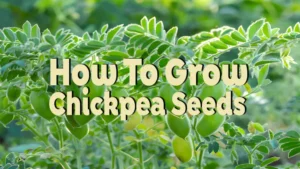




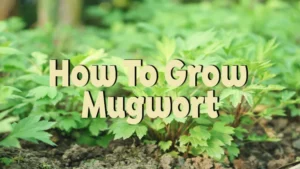
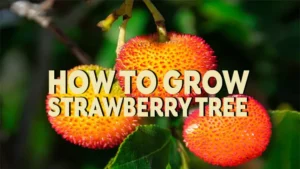
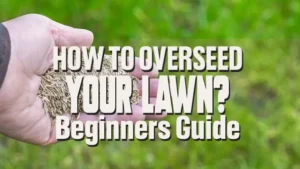



Leave your comment